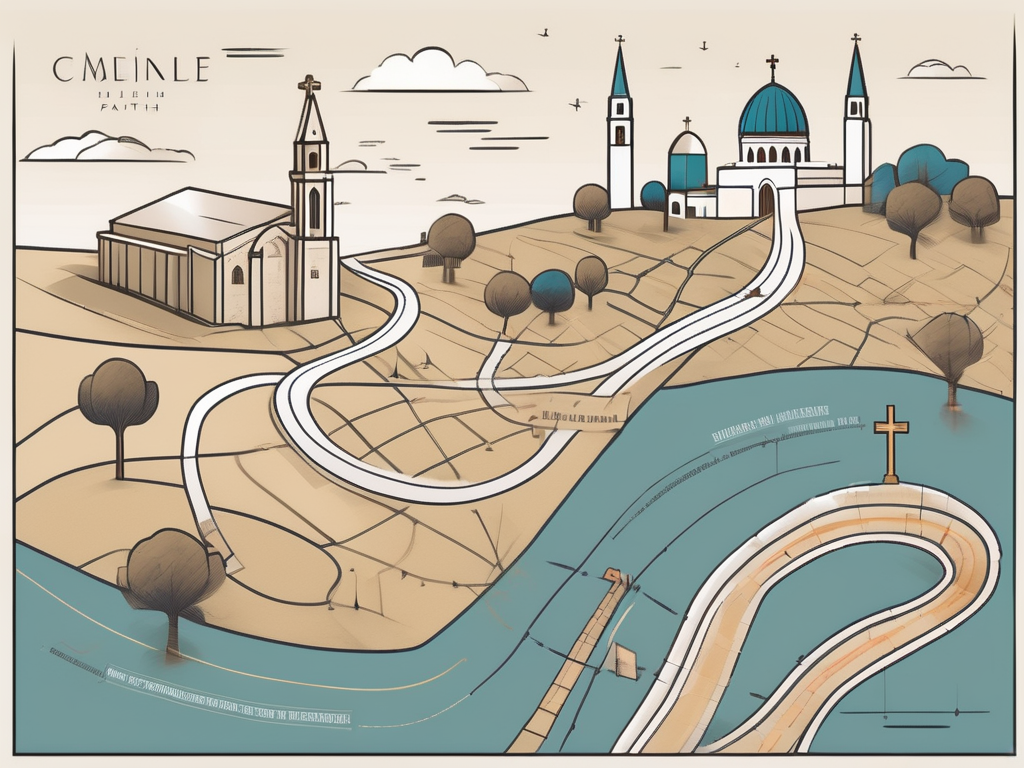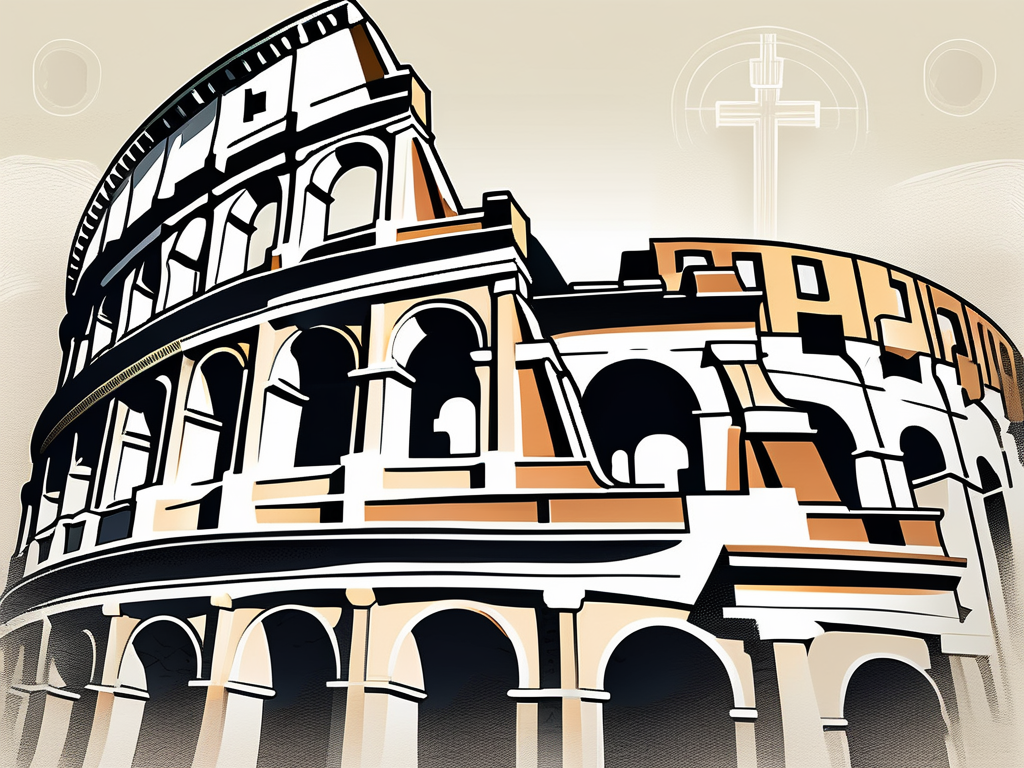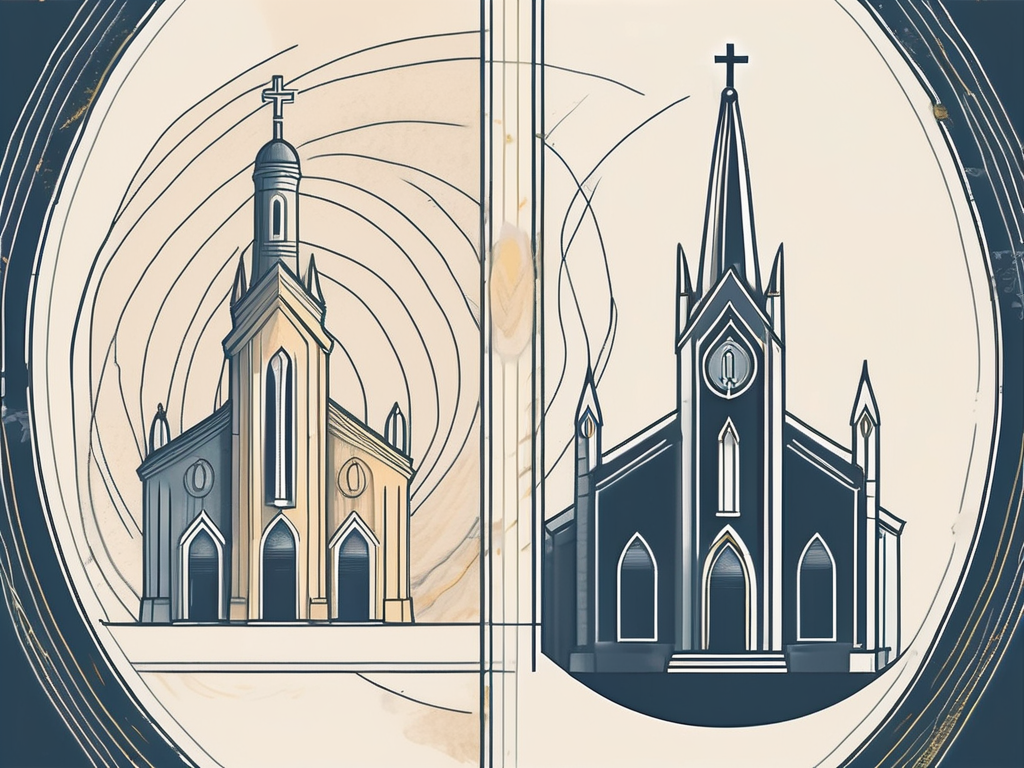In this article, we will explore the fascinating timeline of the spread of Christianity. From its humble beginnings to its immense influence in the Roman Empire and beyond, the story of Christianity is one of both triumph and struggle. So, grab a cup of coffee and get ready to delve into the rich history of this world-changing religion.
The Birth of Christianity
Our journey begins with the birth of Christianity, a religion that has had a profound impact on the world. At the center of this faith is Jesus Christ, a figure whose life and teachings continue to inspire and guide millions of people today. Born in Bethlehem, Jesus grew up in Nazareth, a small town in ancient Israel.
Jesus’ teachings were revolutionary for their time. He preached love, compassion, and forgiveness, challenging the prevailing religious and political norms of the era. His message resonated with many who were disillusioned by the corruption and hypocrisy they witnessed in the religious institutions of the time.
Following Jesus’ crucifixion and resurrection, his disciples, known as the apostles, played a critical role in spreading his message. These dedicated followers, who had witnessed firsthand the miracles and teachings of Jesus, were filled with a fervent passion to share the good news with the world.
The apostles embarked on a remarkable journey, traveling far and wide to spread the teachings of Jesus. They faced numerous challenges and obstacles along the way, but their unwavering commitment to their mission allowed Christianity to take root and flourish in diverse communities.
The period following Jesus’ resurrection, known as the Apostolic Age, marked the early beginnings of the Christian movement. During this time, the apostles established communities of believers, known as churches, in various regions. These churches became centers of worship, fellowship, and spiritual growth, providing a sense of belonging and support for the early Christians.
As the apostles continued to spread the message of Jesus, they encountered both acceptance and resistance. Some embraced Christianity wholeheartedly, finding solace and purpose in its teachings. Others, however, viewed the new faith as a threat to their own religious and political power, leading to persecution and opposition.
Despite the challenges they faced, the apostles remained steadfast in their mission. Their dedication and sacrifice laid the foundations for the growth and expansion of Christianity in the centuries to come. Through their efforts, the teachings of Jesus reached people from all walks of life, transcending cultural and geographical boundaries.
Today, Christianity is one of the world’s largest religions, with followers spanning the globe. The birth of Christianity, rooted in the life and teachings of Jesus Christ and nurtured by the apostles, continues to shape the beliefs, values, and practices of millions of people worldwide.
Christianity in the Roman Empire
The spread of Christianity faced numerous challenges, particularly during the Roman Empire. Early Christians often faced persecution, as their beliefs clashed with the established Roman pagan religion. Despite the dangers, Christianity continued to gain followers, and the resilience of these early believers cannot be understated.
One crucial turning point came with the reign of Emperor Constantine. In 313 AD, he issued the Edict of Milan, granting Christians the freedom to practice their faith openly. This newfound freedom paved the way for Christianity to flourish within the Roman Empire, forever altering the religious landscape of the region.
The persecution faced by early Christians was not limited to physical harm alone. They also endured social ostracism, economic disadvantages, and political marginalization. Their refusal to participate in pagan rituals and worship Roman gods often led to their exclusion from various aspects of society. Despite these challenges, the early Christians remained steadfast in their beliefs, finding solace and strength in their faith.
One of the most famous examples of persecution is the martyrdom of Saint Perpetua and Saint Felicity. These two young women, along with several others, were arrested for their Christian beliefs in Carthage in the year 203 AD. Despite the opportunity to renounce their faith and save their lives, they chose to remain steadfast in their devotion to Christianity. Their unwavering commitment to their beliefs and their willingness to face death rather than renounce their faith became an inspiration for countless believers in the years to come.
However, the tide began to turn with the reign of Emperor Constantine. Constantine’s conversion to Christianity and the subsequent Edict of Milan in 313 AD marked a significant shift in the Roman Empire’s attitude towards Christianity. With this edict, Christians were no longer persecuted for their faith, and they were granted the freedom to worship openly. This newfound religious tolerance allowed Christianity to spread rapidly throughout the empire.
Emperor Constantine’s support for Christianity went beyond mere tolerance. He played a crucial role in the Council of Nicaea in 325 AD, where Christian leaders gathered to address theological disputes and establish a unified doctrine. This council resulted in the formulation of the Nicene Creed, a statement of faith that remains central to many Christian denominations today.
With the support of the Roman Empire, Christianity gained significant influence and power. Churches were constructed, and Christian communities flourished. The conversion of Constantine and the subsequent spread of Christianity within the empire had a profound impact on the religious landscape of the region. Pagan temples and practices gradually declined in popularity, and Christianity emerged as the dominant religion in the Roman Empire.
However, the transition from persecution to acceptance was not without its challenges. As Christianity gained more followers and influence, internal divisions and theological disputes arose within the faith. These disagreements often led to schisms and the formation of different Christian sects. Despite these divisions, the spread of Christianity continued unabated, and its impact on the Roman Empire was undeniable.
In conclusion, the spread of Christianity in the Roman Empire was a complex and multifaceted process. Early Christians faced persecution and hardship, but their unwavering faith and resilience allowed the religion to thrive. The conversion of Emperor Constantine and the subsequent Edict of Milan marked a turning point, granting Christians the freedom to practice their faith openly. This newfound religious tolerance, coupled with the support of the empire, led to the rapid spread of Christianity and its eventual dominance within the Roman Empire.
The Great Schism
As Christianity evolved, theological differences and power struggles between the Eastern and Western parts of the Roman Empire eventually led to the Great Schism in 1054 AD. This division resulted in the formation of the Eastern Orthodox Christianity and Roman Catholic Christianity, each with its distinct traditions and beliefs.
Eastern Orthodox Christianity, centered in Eastern Europe and Russia, emphasized the importance of collective worship and the mystical nature of the faith. The Eastern Orthodox Church, also known as the Byzantine Church, developed its own unique liturgical practices and theological teachings. The Byzantine Empire, with its capital in Constantinople, became the center of this branch of Christianity.
The Byzantine Church placed great emphasis on the role of the bishops as the successors of the apostles and the guardians of the faith. The patriarch of Constantinople, considered the “first among equals” among the bishops, held a position of great authority and influence within the Eastern Orthodox Church. The liturgy of the Eastern Orthodox Church, known as the Divine Liturgy, is a rich and elaborate ceremony that combines prayers, hymns, and rituals to create a deeply spiritual experience for the worshippers.
On the other hand, Roman Catholic Christianity, centered in Western Europe, placed greater emphasis on the authority of the papacy and the sacraments. The Roman Catholic Church, led by the Pope in Rome, claimed to be the one true Church established by Jesus Christ. The Pope, believed to be the successor of Saint Peter, held supreme authority over the Church and was considered the Vicar of Christ on Earth.
The Roman Catholic Church developed a hierarchical structure, with the Pope at the top, followed by cardinals, bishops, priests, and deacons. The sacraments, especially the Eucharist (also known as the Holy Communion), played a central role in the spiritual life of Roman Catholics. The Mass, the main form of worship in the Roman Catholic Church, is a solemn and ritualistic ceremony that commemorates the Last Supper of Jesus with his disciples.
Despite these differences, both Eastern Orthodox Christianity and Roman Catholic Christianity share a common foundation in the teachings of Jesus Christ and the early Christian Church. Both branches of Christianity recognize the authority of the Bible and the importance of the sacraments in the spiritual life of believers. The Great Schism, while causing a permanent division between the Eastern and Western Churches, did not erase the shared history and heritage of Christianity as a whole.
Christianity during the Middle Ages
The Middle Ages witnessed significant events that shaped the course of Christianity. Among these were the Crusades, a series of military campaigns launched to regain control of the Holy Land. While these conflicts marked a dark chapter in history with their violence and atrocities, they also served to strengthen the devotion of many Christians and fostered cultural exchanges between different societies.
During the Crusades, Christian knights and soldiers embarked on long and arduous journeys to the Holy Land, facing numerous challenges along the way. They encountered unfamiliar landscapes, battled against formidable enemies, and endured harsh conditions. Despite the hardships, these brave individuals were driven by a deep sense of religious duty and the belief that they were fighting for a righteous cause.
As the Crusaders traveled through various regions, they came into contact with different cultures, traditions, and ideas. This exposure to new perspectives sparked intellectual curiosity and led to the exchange of knowledge between the East and the West. Christian scholars, for example, were introduced to the works of ancient Greek and Roman philosophers, which had been preserved and translated by Muslim scholars. This influx of knowledge would later contribute to the Renaissance and the revival of learning in Europe.
Another notable event was the Inquisition, a period of intense religious scrutiny and persecution. The Inquisition aimed to root out individuals deemed heretical or non-conformist, seeking to uphold the purity and orthodoxy of the faith. While the Inquisition left a painful legacy, it also highlighted the struggles and complexities of religious belief during this era.
During the Inquisition, individuals suspected of heresy were subjected to harsh interrogations, often involving torture, in order to extract confessions. The accused faced the daunting task of defending their beliefs and proving their innocence in the face of relentless scrutiny. This climate of fear and suspicion created an atmosphere of conformity, as individuals sought to avoid being labeled as heretics.
However, the Inquisition also had unintended consequences. It led to the rise of religious dissent and underground movements, as individuals who disagreed with the established orthodoxy sought alternative ways to express their faith. These dissenters, known as heretics, often formed secret societies and developed their own interpretations of Christianity, challenging the authority of the Church.
Furthermore, the Inquisition had a profound impact on the relationship between religion and power. The Church, as the driving force behind the Inquisition, wielded immense authority and influence over both spiritual and secular matters. This concentration of power led to debates and conflicts between religious and political leaders, as they vied for control and supremacy.
In conclusion, the Middle Ages were a period of significant religious developments for Christianity. The Crusades, while marred by violence, contributed to the strengthening of Christian devotion and the exchange of ideas between different cultures. The Inquisition, although marked by persecution, shed light on the complexities of religious belief and sparked religious dissent. These events shaped the course of Christianity and left a lasting impact on the religious, cultural, and political landscape of the Middle Ages.
The Protestant Reformation
The 16th century brought about a seismic shift in Christianity through the Protestant Reformation. Martin Luther, a German monk, challenged the authority of the Catholic Church and sparked a wave of reforms with his Ninety-Five Theses. Luther’s teachings emphasized grace, faith, and the authority of the Bible, leading to the rise of Protestant denominations.
This period saw the establishment of various Protestant sects, each interpreting the Scriptures in their own way. The Reformation brought religious diversity and played a significant role in shaping the religious landscape of Europe and beyond.
The Spread Continues
From the birth of Christianity to the spread across continents and the divisions that emerged, the timeline of this faith is an intricate tapestry of human beliefs, struggles, and triumphs. Today, Christianity is a global religion with millions of followers, continuing to evolve and adapt to the ever-changing world in which we live.
Understanding the timeline of the spread of Christianity allows us to appreciate its profound impact on individuals, societies, and cultures throughout history. It is a reminder of the power of faith, the complexities of religious movements, and the enduring quest for spiritual connection.
So, the next time you pass by a church or engage in a conversation about religion, take a moment to reflect on the timeline of the spread of Christianity. It is a journey that has shaped and continues to shape our world in ways we may never fully comprehend.












